-
EXECUTIVE SUMMARY 16
-
MARKET ATTRACTIVENESS ANALYSIS 17
- GLOBAL LUXURY APPAREL MARKET, BY TYPE 17
- GLOBAL LUXURY APPAREL MARKET, BY GENDER 18
- GLOBAL LUXURY APPAREL MARKET, BY FORM 19
- GLOBAL LUXURY APPAREL MARKET, BY CONSUMER GROUP 20
- GLOBAL LUXURY APPAREL MARKET, BY REGION 21
-
MARKET INTRODUCTION 22
-
DEFINITION 22
-
SCOPE OF THE STUDY 22
-
RESEARCH OBJECTIVE 22
-
MARKET STRUCTURE 23
-
RESEARCH METHODOLOGY 24
-
DATA MINING 24
-
SECONDARY RESEARCH 25
-
PRIMARY RESEARCH 25
- PRIMARY INTERVIEWS AND INFORMATION GATHERING PROCESS 26
- BREAKDOWN OF PRIMARY RESPONDENTS 26
-
RESEARCH METHODOLOGY FOR MARKET SIZE ESTIMATION 28
- BOTTOM-UP APPROACH 29
- TOP-DOWN APPROACH 29
-
DATA VALIDATION 30
-
ASSUMPTIONS & LIMITATIONS 30
-
MARKET DYNAMICS 31
-
INTRODUCTION 31
-
DRIVERS 33
- INCREASING INFLUENCE OF ONLINE PLATFORMS 33
- STATUS SYMBOL AND MILLENNIAL APPEAL 33
- GROWING PREFERENCE FOR LUXURY FORMAL WEAR 34
-
RESTRAINT 35
- INCREASING PREFERENCE OF COUNTERFEIT PRODUCTS 35
-
OPPORTUNITIES 36
- TAPPING INTO MODEST FASHION 36
- IMPROVED SUPPLY CHAIN AND DISTRIBUTION 37
-
CHALLENGES 37
- PRESERVING EXCLUSIVITY IN THE AGE OF ACCESSIBILITY 37
-
MARKET FACTOR ANALYSIS 38
-
VALUE CHAIN ANALYSIS 38
- RAW MATERIAL PROCUREMENT 39
- PROCESSING 39
- PACKAGING 40
-
SUPPLY CHAIN ANALYSIS 41
- RAW MATERIAL SOURCING 41
- DESIGNING 42
- MANUFACTURING 42
- DISTRIBUTION 43
- RETAIL 43
-
PORTER’S FIVE FORCES MODEL 44
- BARGAINING POWER OF SUPPLIERS 45
- BARGAINING POWER OF BUYERS 45
- THREAT OF NEW ENTRANTS 45
- THREAT OF SUBSTITUTES 46
- INTENSITY OF RIVALRY 46
-
IMPACT OF CORONAVIRUS OUTBREAK ON GLOBAL MARKET 46
- IMPACT ON PRODUCTION 46
- IMPACT ON CONSUMER BUYING BEHAVIOUR 47
- IMPACT OF COVID-19 ON SUPPLY CHAIN 47
- IMPACT ON PRICING 47
- IMPACT ON ONLINE VS OFFLINE SALES 48
-
GLOBAL LUXURY APPAREL MARKET, BY TYPE 49
-
INTRODUCTION 49
-
CLOTHING 50
- FORMAL WEAR 51
- CASUAL WEAR 52
- SPORTS WEAR 52
- INNER WEAR 53
-
FOOTWEAR 53
-
ACCESSORIES 54
- WALLETS 55
- BELTS 55
- CAPS AND HATS 56
- WATCHES 56
- SUNGLASSES 57
- OTHERS 57
-
BAGS/HANDBAGS 58
-
GLOBAL LUXURY APPAREL MARKET, BY GENDER 59
-
INTRODUCTION 59
-
FEMALE 60
-
MALE 60
-
GLOBAL LUXURY APPAREL MARKET, BY FORM 61
-
INTRODUCTION 61
-
OFFLINE 62
-
ONLINE 62
-
GLOBAL LUXURY APPAREL MARKET, BY CONSUMER GROUP 63
-
INTRODUCTION 63
-
GEN ALPHA 64
-
GEN Z 64
-
MILLENNIALS 65
-
GEN X 65
-
BABY BOOMERS 65
-
GLOBAL LUXURY APPAREL MARKET, BY REGION 66
-
INTRODUCTION 66
-
NORTH AMERICA 67
- US 71
- CANADA 73
- MEXICO 76
-
EUROPE 79
- GERMANY 83
- FRANCE 85
- UK 88
- ITALY 90
- SPAIN 93
- REST OF EUROPE 95
-
ASIA PACIFIC 98
- CHINA 102
- JAPAN 104
- INDIA 107
- AUSTRALIA AND NEWZEALAND 109
- REST OF ASIA PACIFIC 112
-
ROW 114
- SOUTH AMERICA 117
- MIDDLE EAST 120
- AFRICA 122
-
COMPETITIVE LANDSCAPE 126
-
COMPETITIVE OVERVIEW 126
-
COMPETITIVE BENCHMARKING 127
-
DEVELOPMENT SHARE ANALYSIS 128
-
KEY DEVELOPMENTS & GROWTH STRATEGIES 128
- NEW PRODUCT LAUNCH/SERVICE DEPLOYMENT 128
- PARTNERSHIP, AGREEMENT AND COLLABORATION 129
- FASHION SHOW 129
- EXPANSION 130
-
COMPANY PROFILES 131
-
LOUIS VUITTON 131
- COMPANY OVERVIEW 131
- FINANCIAL OVERVIEW 132
- PRODUCTS OFFERED 132
- KEY DEVELOPMENTS 134
- SWOT ANALYSIS 135
- KEY STRATEGY 135
-
CHANNEL 136
- COMPANY OVERVIEW 136
- FINANCIAL OVERVIEW 136
- PRODUCTS OFFERED 137
- KEY DEVELOPMENTS 137
- SWOT ANALYSIS 138
- KEY STRATEGY 138
-
DIOR 139
- COMPANY OVERVIEW 139
- FINANCIAL OVERVIEW 140
- PRODUCTS OFFERED 141
- KEY DEVELOPMENTS 141
- SWOT ANALYSIS 142
- KEY STRATEGY 142
-
HERMES 143
- COMPANY OVERVIEW 143
- FINANCIAL OVERVIEW 144
- PRODUCTS OFFERED 144
- KEY DEVELOPMENTS 145
- SWOT ANALYSIS 145
- KEY STRATEGY 145
-
SAINT LAURENT 146
- COMPANY OVERVIEW 146
- FINANCIAL OVERVIEW 146
- PRODUCTS OFFERED 147
- KEY DEVELOPMENTS 147
- SWOT ANALYSIS 148
- KEY STRATEGY 148
-
PRADA 149
- COMPANY OVERVIEW 149
- FINANCIAL OVERVIEW 150
- PRODUCTS OFFERED 150
- KEY DEVELOPMENTS 151
- SWOT ANALYSIS 152
- KEY STRATEGY 152
-
BURBERRY 153
- COMPANY OVERVIEW 153
- FINANCIAL OVERVIEW 154
- PRODUCTS OFFERED 154
- KEY DEVELOPMENTS 155
- SWOT ANALYSIS 156
- KEY STRATEGY 156
-
KERING HOLLAND NV 157
- COMPANY OVERVIEW 157
- FINANCIAL OVERVIEW 158
- PRODUCTS OFFERED 158
- KEY DEVELOPMENTS 159
- SWOT ANALYSIS 159
- KEY STRATEGY 159
-
-
GIORGIO ARMANI 160
- COMPANY OVERVIEW 160
- FINANCIAL OVERVIEW 160
- PRODUCTS OFFERED 161
- KEY DEVELOPMENTS 162
- SWOT ANALYSIS 162
- KEY STRATEGY 163
-
DOLCE & GABBANA 164
- COMPANY OVERVIEW 164
- PRODUCTS OFFERED 164
- SWOT ANALYSIS 165
- KEY STRATEGY 165
-
-
LIST OF TABLES
-
MARKET SYNOPSIS 16
-
LIST OF ASSUMPTIONS 30
-
GLOBAL LUXURY APPAREL MARKET, BY TYPE, 2019-2032 (USD MILLION) 50
-
GLOBAL LUXURY APPAREL MARKET, BY CLOTHING, 2019-2032 (USD MILLION) 51
-
GLOBAL LUXURY APPAREL MARKET, BY ACCESSORIES, 2019-2032 (USD MILLION) 54
-
GLOBAL LUXURY APPAREL MARKET, BY GENDER, 2019-2032 (USD MILLION) 59
-
GLOBAL LUXURY APPAREL MARKET, BY FORM, 2019-2032 (USD MILLION) 61
-
GLOBAL LUXURY APPAREL MARKET, BY CONSUMER GROUP, 2019-2032 (USD MILLION) 64
-
GLOBAL LUXURY APPAREL MARKET, BY REGION, 2019-2032 (USD MILLION) 67
-
NORTH AMERICA: LUXURY APPAREL MARKET, BY COUNTRY, 2019 TO 2032 (USD MILLION) 68
-
NORTH AMERICA LUXURY APPAREL MARKET, BY TYPE, 2019-2032 (USD MILLION) 68
-
NORTH AMERICA LUXURY APPAREL MARKET, BY CLOTHING, 2019-2032 (USD MILLION) 69
-
NORTH AMERICA LUXURY APPAREL MARKET, BY ACCESSORIES, 2019-2032 (USD MILLION) 69
-
NORTH AMERICA LUXURY APPAREL MARKET, BY GENDER, 2019-2032 (USD MILLION) 69
-
NORTH AMERICA LUXURY APPAREL MARKET, BY FORM, 2019-2032 (USD MILLION) 70
-
NORTH AMERICA LUXURY APPAREL MARKET, BY CONSUMER GROUP, 2019-2032 (USD MILLION) 70
-
US LUXURY APPAREL MARKET, BY TYPE, 2019-2032 (USD MILLION) 71
-
US LUXURY APPAREL MARKET, BY CLOTHING, 2019-2032 (USD MILLION) 71
-
US LUXURY APPAREL MARKET, BY ACCESSORIES, 2019-2032 (USD MILLION) 72
-
US LUXURY APPAREL MARKET, BY GENDER, 2019-2032 (USD MILLION) 72
-
US LUXURY APPAREL MARKET, BY FORM, 2019-2032 (USD MILLION) 72
-
US LUXURY APPAREL MARKET, BY CONSUMER GROUP, 2019-2032 (USD MILLION) 73
-
CANADA LUXURY APPAREL MARKET, BY TYPE, 2019-2032 (USD MILLION) 73
-
CANADA LUXURY APPAREL MARKET, BY CLOTHING, 2019-2032 (USD MILLION) 74
-
CANADA LUXURY APPAREL MARKET, BY ACCESSORIES, 2019-2032 (USD MILLION) 74
-
CANADA LUXURY APPAREL MARKET, BY GENDER, 2019-2032 (USD MILLION) 75
-
CANADA LUXURY APPAREL MARKET, BY FORM, 2019-2032 (USD MILLION) 75
-
CANADA LUXURY APPAREL MARKET, BY CONSUMER GROUP, 2019-2032 (USD MILLION) 75
-
MEXICO LUXURY APPAREL MARKET, BY TYPE, 2019-2032 (USD MILLION) 76
-
MEXICO LUXURY APPAREL MARKET, BY CLOTHING, 2019-2032 (USD MILLION) 76
-
MEXICO LUXURY APPAREL MARKET, BY ACCESSORIES, 2019-2032 (USD MILLION) 77
-
MEXICO LUXURY APPAREL MARKET, BY GENDER, 2019-2032 (USD MILLION) 77
-
MEXICO LUXURY APPAREL MARKET, BY FORM, 2019-2032 (USD MILLION) 78
-
MEXICO LUXURY APPAREL MARKET, BY CONSUMER GROUP, 2019-2032 (USD MILLION) 78
-
EUROPE: LUXURY APPAREL MARKET, BY COUNTRY, 2019 TO 2032 (USD MILLION) 80
-
EUROPE LUXURY APPAREL MARKET, BY TYPE, 2019-2032 (USD MILLION) 80
-
EUROPE LUXURY APPAREL MARKET, BY CLOTHING, 2019-2032 (USD MILLION) 81
-
EUROPE LUXURY APPAREL MARKET, BY ACCESSORIES, 2019-2032 (USD MILLION) 81
-
EUROPE LUXURY APPAREL MARKET, BY GENDER, 2019-2032 (USD MILLION) 81
-
EUROPE LUXURY APPAREL MARKET, BY FORM, 2019-2032 (USD MILLION) 82
-
EUROPE LUXURY APPAREL MARKET, BY CONSUMER GROUP, 2019-2032 (USD MILLION) 82
-
GERMANY LUXURY APPAREL MARKET, BY TYPE, 2019-2032 (USD MILLION) 83
-
GERMANY LUXURY APPAREL MARKET, BY CLOTHING, 2019-2032 (USD MILLION) 83
-
GERMANY LUXURY APPAREL MARKET, BY ACCESSORIES, 2019-2032 (USD MILLION) 84
-
GERMANY LUXURY APPAREL MARKET, BY GENDER, 2019-2032 (USD MILLION) 84
-
GERMANY LUXURY APPAREL MARKET, BY FORM, 2019-2032 (USD MILLION) 84
-
GERMANY LUXURY APPAREL MARKET, BY CONSUMER GROUP, 2019-2032 (USD MILLION) 85
-
FRANCE LUXURY APPAREL MARKET, BY TYPE, 2019-2032 (USD MILLION) 85
-
FRANCE LUXURY APPAREL MARKET, BY CLOTHING, 2019-2032 (USD MILLION) 86
-
FRANCE LUXURY APPAREL MARKET, BY ACCESSORIES, 2019-2032 (USD MILLION) 86
-
FRANCE LUXURY APPAREL MARKET, BY GENDER, 2019-2032 (USD MILLION) 87
-
FRANCE LUXURY APPAREL MARKET, BY FORM, 2019-2032 (USD MILLION) 87
-
FRANCE LUXURY APPAREL MARKET, BY CONSUMER GROUP, 2019-2032 (USD MILLION) 87
-
UK LUXURY APPAREL MARKET, BY TYPE, 2019-2032 (USD MILLION) 88
-
UK LUXURY APPAREL MARKET, BY CLOTHING, 2019-2032 (USD MILLION) 88
-
UK LUXURY APPAREL MARKET, BY ACCESSORIES, 2019-2032 (USD MILLION) 89
-
UK LUXURY APPAREL MARKET, BY GENDER, 2019-2032 (USD MILLION) 89
-
UK LUXURY APPAREL MARKET, BY FORM, 2019-2032 (USD MILLION) 89
-
UK LUXURY APPAREL MARKET, BY CONSUMER GROUP, 2019-2032 (USD MILLION) 90
-
ITALY LUXURY APPAREL MARKET, BY TYPE, 2019-2032 (USD MILLION) 90
-
ITALY LUXURY APPAREL MARKET, BY CLOTHING, 2019-2032 (USD MILLION) 91
-
ITALY LUXURY APPAREL MARKET, BY ACCESSORIES, 2019-2032 (USD MILLION) 91
-
ITALY LUXURY APPAREL MARKET, BY GENDER, 2019-2032 (USD MILLION) 92
-
ITALY LUXURY APPAREL MARKET, BY FORM, 2019-2032 (USD MILLION) 92
-
ITALY LUXURY APPAREL MARKET, BY CONSUMER GROUP, 2019-2032 (USD MILLION) 92
-
SPAIN LUXURY APPAREL MARKET, BY TYPE, 2019-2032 (USD MILLION) 93
-
SPAIN LUXURY APPAREL MARKET, BY CLOTHING, 2019-2032 (USD MILLION) 93
-
SPAIN LUXURY APPAREL MARKET, BY ACCESSORIES, 2019-2032 (USD MILLION) 94
-
SPAIN LUXURY APPAREL MARKET, BY GENDER, 2019-2032 (USD MILLION) 94
-
SPAIN LUXURY APPAREL MARKET, BY FORM, 2019-2032 (USD MILLION) 94
-
SPAIN LUXURY APPAREL MARKET, BY CONSUMER GROUP, 2019-2032 (USD MILLION) 95
-
REST OF EUROPE LUXURY APPAREL MARKET, BY TYPE, 2019-2032 (USD MILLION) 95
-
REST OF EUROPE LUXURY APPAREL MARKET, BY CLOTHING, 2019-2032 (USD MILLION) 96
-
REST OF EUROPE LUXURY APPAREL MARKET, BY ACCESSORIES, 2019-2032 (USD MILLION) 96
-
REST OF EUROPE LUXURY APPAREL MARKET, BY GENDER, 2019-2032 (USD MILLION) 97
-
REST OF EUROPE LUXURY APPAREL MARKET, BY FORM, 2019-2032 (USD MILLION) 97
-
REST OF EUROPE LUXURY APPAREL MARKET, BY CONSUMER GROUP, 2019-2032 (USD MILLION) 97
-
ASIA PACIFIC: LUXURY APPAREL MARKET, BY COUNTRY, 2019 TO 2032 (USD MILLION) 99
-
ASIA PACIFIC LUXURY APPAREL MARKET, BY TYPE, 2019-2032 (USD MILLION) 99
-
ASIA PACIFIC LUXURY APPAREL MARKET, BY CLOTHING, 2019-2032 (USD MILLION) 100
-
ASIA PACIFIC LUXURY APPAREL MARKET, BY ACCESSORIES, 2019-2032 (USD MILLION) 100
-
ASIA PACIFIC LUXURY APPAREL MARKET, BY GENDER, 2019-2032 (USD MILLION) 101
-
ASIA PACIFIC LUXURY APPAREL MARKET, BY FORM, 2019-2032 (USD MILLION) 101
-
ASIA PACIFIC LUXURY APPAREL MARKET, BY CONSUMER GROUP, 2019-2032 (USD MILLION) 101
-
CHINA LUXURY APPAREL MARKET, BY TYPE, 2019-2032 (USD MILLION) 102
-
CHINA LUXURY APPAREL MARKET, BY CLOTHING, 2019-2032 (USD MILLION) 102
-
CHINA LUXURY APPAREL MARKET, BY ACCESSORIES, 2019-2032 (USD MILLION) 103
-
CHINA LUXURY APPAREL MARKET, BY GENDER, 2019-2032 (USD MILLION) 103
-
CHINA LUXURY APPAREL MARKET, BY FORM, 2019-2032 (USD MILLION) 103
-
CHINA LUXURY APPAREL MARKET, BY CONSUMER GROUP, 2019-2032 (USD MILLION) 104
-
JAPAN LUXURY APPAREL MARKET, BY TYPE, 2019-2032 (USD MILLION) 104
-
JAPAN LUXURY APPAREL MARKET, BY CLOTHING, 2019-2032 (USD MILLION) 105
-
JAPAN LUXURY APPAREL MARKET, BY ACCESSORIES, 2019-2032 (USD MILLION) 105
-
JAPAN LUXURY APPAREL MARKET, BY GENDER, 2019-2032 (USD MILLION) 106
-
JAPAN LUXURY APPAREL MARKET, BY FORM, 2019-2032 (USD MILLION) 106<
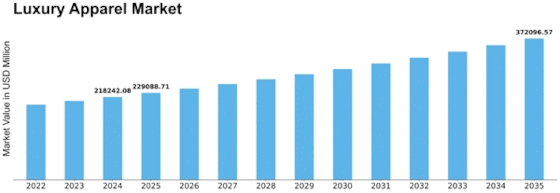

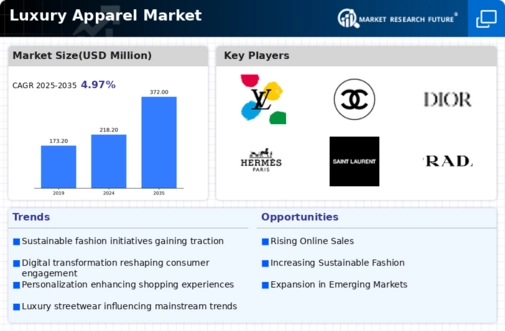
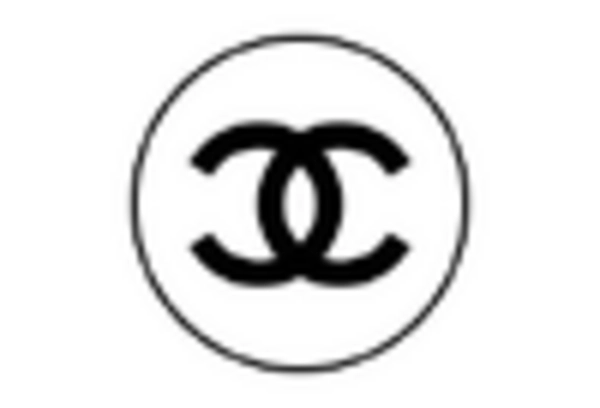
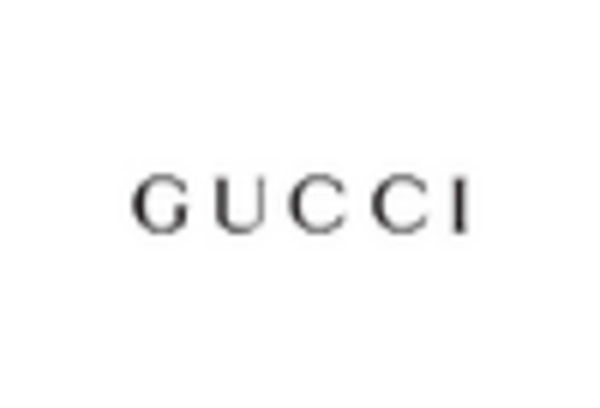
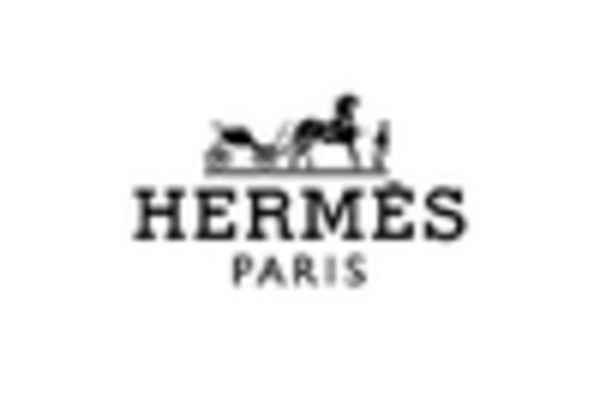
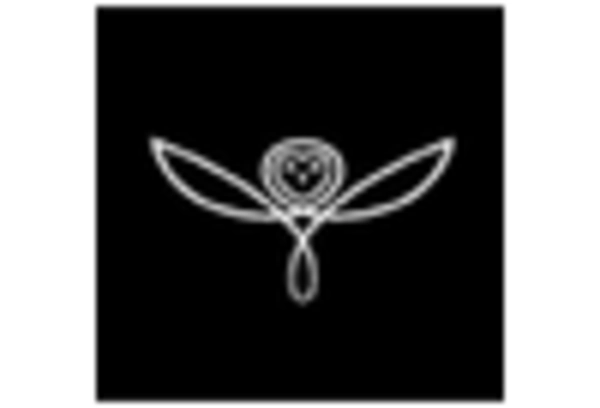
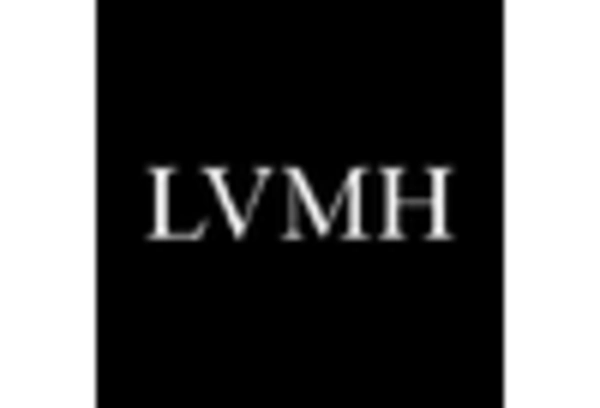
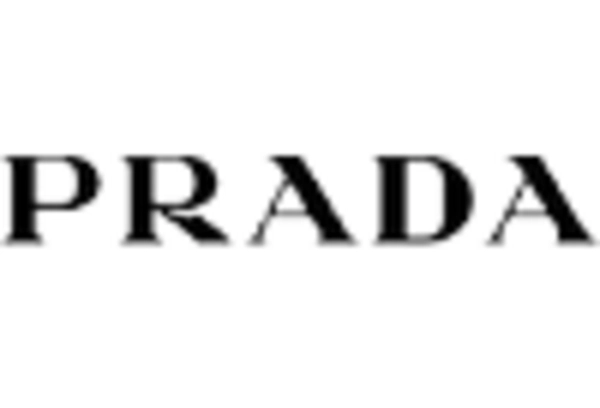

Leave a Comment